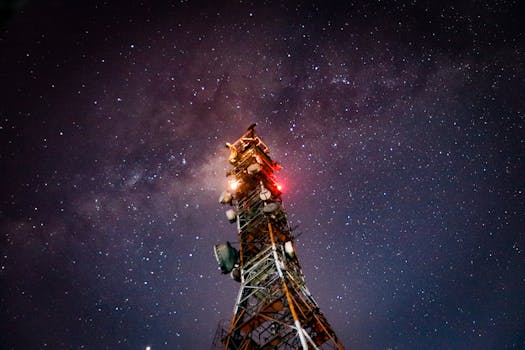
LEO Satellites: Revolutionizing Global Connectivity with Low Earth Orbit Technology
LEO satellites, or Low Earth Orbit satellites, are a type of satellite that orbits the Earth at an altitude of around 160 to 2,000 kilometers. This relatively low orbit allows LEO satellites to provide a range of benefits, including faster data transfer rates, lower latency, and improved connectivity. In this article, we will explore the world of LEO satellites and their impact on global connectivity.
The History of LEO Satellites
The concept of LEO satellites has been around for several decades. The first LEO satellite was launched in the 1960s, and since then, the technology has continued to evolve. In the 1990s, the first commercial LEO satellite constellation was launched, providing mobile communication services to remote areas. Today, LEO satellites are used for a range of applications, including communication, navigation, Earth observation, and scientific research.
How LEO Satellites Work
LEO satellites work by orbiting the Earth at a low altitude, which allows them to provide a range of benefits. One of the main advantages of LEO satellites is their low latency. Because they are closer to the Earth, signals transmitted to and from LEO satellites have a shorter distance to travel, resulting in faster data transfer rates. This makes LEO satellites ideal for applications that require real-time communication, such as video conferencing and online gaming.
Another benefit of LEO satellites is their ability to provide global coverage. Because they are in a low orbit, LEO satellites can be launched into a variety of orbits, allowing them to cover the entire Earth. This makes them ideal for providing connectivity to remote or underserved areas, where traditional communication infrastructure may not be available.
Applications of LEO Satellites
LEO satellites have a range of applications, including communication, navigation, Earth observation, and scientific research. In the field of communication, LEO satellites are used to provide mobile communication services, including voice, data, and internet connectivity. They are also used to provide backhaul services, connecting remote areas to the global communication network.
In the field of navigation, LEO satellites are used to provide location information and timing signals. They are also used in Earth observation, providing high-resolution images of the Earth’s surface. In scientific research, LEO satellites are used to study the Earth’s atmosphere, oceans, and land surfaces.
The Future of LEO Satellites
The future of LEO satellites looks bright. With the increasing demand for global connectivity and the growing need for real-time communication, LEO satellites are poised to play a major role in the future of satellite technology. Companies such as SpaceX, OneWeb, and Amazon are investing heavily in LEO satellite constellations, with plans to launch thousands of satellites into orbit in the coming years.
These constellations will provide a range of services, including communication, navigation, and Earth observation. They will also enable new applications, such as satellite-based internet of things (IoT) and smart cities. With their low latency, global coverage, and high-speed data transfer rates, LEO satellites are set to revolutionize the way we communicate and access information.






